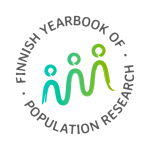Challenges posed by an ageing population can be mitigated

The population of Finland is currently the second oldest in Europe, as Finnish baby boomers reach very old age and birth rates have declined considerably. This raises concerns about the economic consequences of a shrinking labour force.
A new study published in the Finnish Yearbook of Population Research uses microsimulations to project increases in labour force productivity until 2060 under different scenarios of educational expansion. The article also explores the effects of different fertility levels on future scenarios.
Results show that population ageing in Finland looks less dramatic when considering labour force dependency ratios as compared to purely age-based ratios. Nevertheless all measures and scenarios show a deterioration of the dependency ratio.
Authors Guillaume Marois (IIASA), Anna Rotkirch (Väestöliitto) and Wolfgang Lutz (IIASA) emphasize that although there is no quick solution to the economic challenges posed by the ageing of the population, the effects can be mitigated in the longer term by using various political means. A higher total fertility rate together with an enhanced education policy would benefit the productivity-weighted labour force dependency ratio the most. Investing in education and especially raising the education level of men was identified as a key policy goal: the consequences of population ageing look less dramatic for economic productivity, were Finnish men to become as educated as Finnish women.
Tackling population ageing also requires the development of modern and adequate methods.
“The policy toolkit must include ways to assess and predict the change in the demographic structure at both national and regional levels, also focusing on human capital and not just the change in the age structure,” says Professor Wolfgang Lutz from IIASA and the University of Vienna.
This issue of the yearbook also revisits the migration-system approach. Mika Raunio’s (Migration Institute of Finland) article offers a more nuanced conceptual device for focused study of migration, and especially regional development. Michael Thomas from Statistics Norway and co-authors assess the accuracy of national population projections using Norway as an example. The article by Mathias Ebot and Päivi Armila from the University of Eastern Finland examines the expectations, fears and aspirations of parents from Finnish-African families. Nafisa Yeasmin and Waliul Hasanat’s (University of Lapland) study explores the main factors hindering the financial and socio-cultural inclusion of women immigrants in Northern Finland.
This issue of the Yearbook was finalised after Russia attacked Ukraine the 24th of February, 2022. In his invited reflection, Professor David Coleman from Oxford University provides an overview of Ukraine’s demographic history and previous challenges.
Finnish Yearbook of Population Research, Vol. 56 (2021-2022)
More information
Tiina Helamaa, editorial secretary, Väestöliitto
tiina.helamaa@vaestoliitto.fi
Saara Pellander, guest editor, Migration Institute of Finland
saara.pellander@migrationinstitute.fi
Elli Heikkilä, guest editor, Migration Institute of Finland
elli.heikkila@migrationinstitute.fi
The Finnish Yearbook of Population Research is published together with the Migration Institute of Finland, the Finnish Demographic Society and Väestöliitto.
